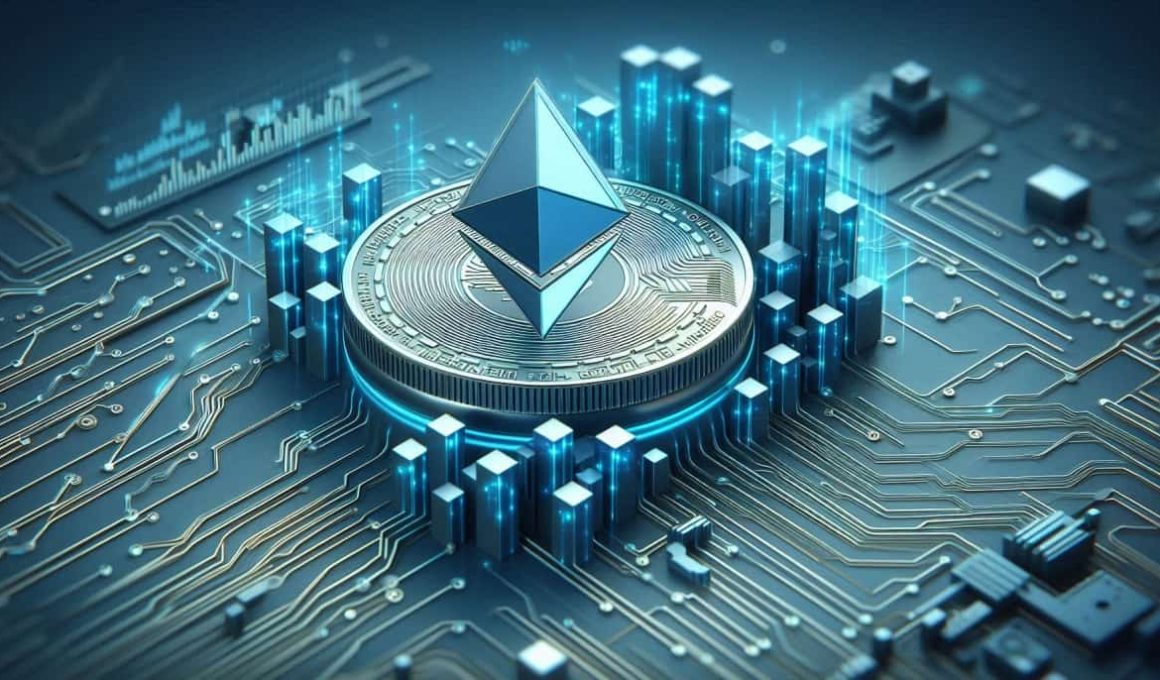According to recent reports, Ethereum’s Layer 2 solutions could reach an impressive $1 trillion market capitalization by 2030. This positive forecast hinges on the significant potential of Layer 2 networks in resolving Ethereum’s scalability issues, thus unlocking massive growth within its ecosystem.
Even if Ethereum is the dominant platform for smart contracts, it has scalability limitations that represent a hindrance. However, Layer 2 networks aim to change that, helping improve Ethereum’s processing capabilities and meeting the needs of a growing ecosystem.
Understanding Layer 2 solutions
Ethereum Layer-2 solutions include scaling technologies that aim to address the scalability issues of the Ethereum blockchain. Since Ethereum is the platform of choice for building dApps and various Web3 projects, growing network activity has led to slower processing times and increased transaction fees.
A notable aspect of L2 solutions is that they function as independent blockchains, meaning they run side by side with the primary chain, which is complementary to the Ethereum network. Since they process transactions off the primary Ethereum chain, interacting with the mainnet only in specific circumstances, this helps enhance scalability while alleviating network congestion and ensuring faster transaction speeds and lower fees.
An essential feature of L2 solutions is that they can guarantee the same security as the original Ethereum chain while also offering enhanced performance, which translates into higher throughput and reduced costs. Therefore, the network becomes more efficient and cost-effective for users who seek to engage with it.
There are mainly four types of Layer 2 solutions for Ethereum, namely:
- Optimistic Rollups. This Layer 2 solution is based on the idea that transactions are valid by default, and they only require an intensive verification process if there are disputes over the validity. In other words, an optimistic rollup functions on the principle of the “innocent until found guilty”. This layer two scaling solution is effective in terms of scalability, at the same time offering flexibility to developers in designing and launching new dApps. What’s more, they also provide an eco-friendly alternative to traditional on-chain transactions.
- Zk-Rollups. Also known as Zero-Knowledge Rollups, this is another type of Layer 2 technology, and its execution process involves several steps. Firstly, multiple transactions are collected in batches, which are further computed and validated off-chain. After the batch is processed, a cryptographic proof is generated, which is further submitted to the leading network. Next, the proof is verified by the main chain’s nodes, and once this step is completed, the transactions are considered complete.
- State Channels. A state channel represents a two-way communication channel between two nodes in the network, two users, or a user and a service. This channel enables transactions to be completed outside the blockchain, which helps reduce risk while eliminating incurring gas fees. This L2 solution has utility when it comes to applications that need low-latency interactions and high frequency.
- Plasma. Finally, Plasma is an L2 scaling solution that uses Merkle trees and smart contracts to develop an endless number of child chain copies of the main Ethereum blockchain. The process of offloading transactions from layer 1 (the mainchain) into layer 2 (child chains) enables quick and cheap transactions. Just like channels do, plasma guarantees the same level of security as the mainchain, but it can be more favourable than the former because it allows you to send assets to anyone instead of being limited to only two parties.
Layer 2 networks have the potential to unlock new opportunities for growth within the Ethereum ecosystem
Layer 2 blockchains have transformative potential for Ethereum’s performance, and according to predictions, they could result in a $1 trillion market cap in the next six years. These scaling solutions are designed to enhance Ethereum’s processing capabilities while also maintaining its fundamental principles of decentralization and security. The Dencun upgrade has brought significant development to the ecosystem by introducing blobs, which aim to reduce data posting costs, thus enhancing layer two operations from an economical perspective.
In the future, the Ethereum blockchain is expected to become more dynamic, comprising thousands of specialized L2 networks and redefining industries while also opening the door to endless possibilities for innovations, ranging from specialized financial applications or decentralized social media platforms.
However, while L2-related tokens offer incredible opportunities, it’s essential to remain cautious regarding their long-term value. The primary seven Ethereum layer two tokens already display a 40 billion dollar valuation, and more projects are expected to launch in the following months, which increases the possibility of market saturation.
The future of L2 solutions
Despite the risks and uncertainty associated with layer two solutions, it’s essential not to overlook the importance of this scaling plan. According to Vitalik Buterin’s scaling roadmap, they represent a robust strategy that will make a difference in Ethereum’s network in the future. Ethereum has only completed one of its total scaling phases. The Merge marked its transition from a PoW blockchain to a PoS blockchain, laying the foundation for the next phase, known as the Surge, which aims to enhance transaction throughput and reduce gas fees.
The next phases, the Scourge, the Purge, and the Splurge, are designed to help mitigate centralization risks, facilitate block verification, and lower the costs of running nodes. Regarding the most significant L2 scaling risks (namely sequencer centralization and Ethereum fragmentation), developers have suggested solutions like shared sequencing and smart contract wallets to help mitigate them effectively.
Takeaway
No matter the challenges that may arise in the process, one thing is clear: Ethereum developers are doing their best to pull off something that wasn’t achieved by any crypto blockchain network before. So, it deserves attention for that, mainly because the upgrades could improve the Ethereum network substantially. It’s worth noting that the developers are indeed aware of the uncertainties, and because of this, they are implementing a flexible and calculated approach to enhance Ethereum’s performance.
While Ethereum initially planned to use shard chains to achieve scaling, developers have found L2 rollups to be more effective in accomplishing this goal, which only proves their commitment to innovation. When it comes to the Ethereum scaling roadmap, nothing is set in stone—it’s an adaptive process that will ultimately transform Ethereum into a maximally resilient platform.









